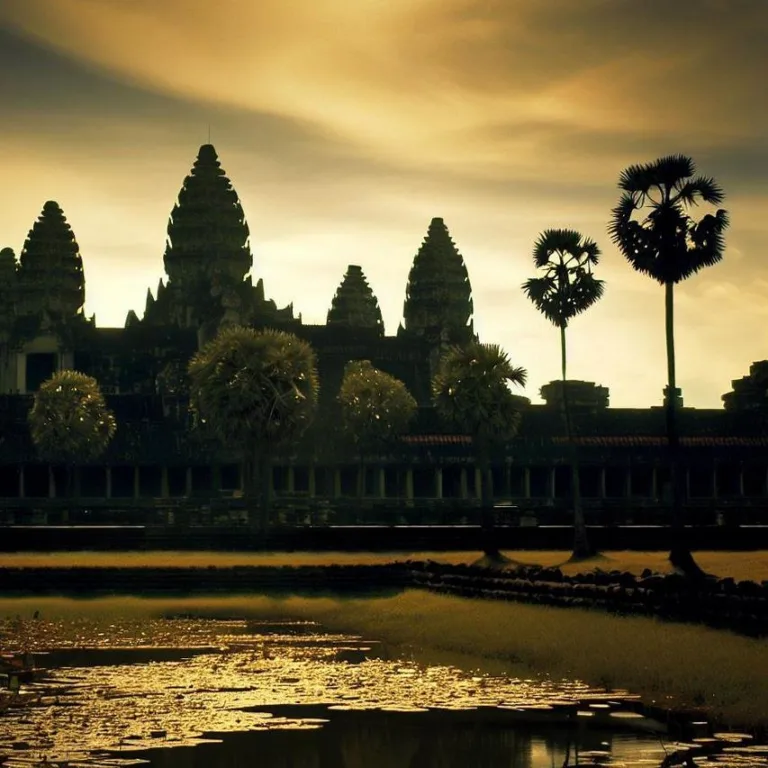Welcome to our comprehensive guide to Angkor Wat, one of the most iconic archaeological sites in the world. This awe-inspiring temple complex, located in the heart of Cambodia, has captivated the imaginations of travelers, historians, and adventurers for centuries. In this article, we will delve into the rich history, architectural marvels, and cultural significance of Angkor Wat.
The historical enigma
Angkor Wat, often referred to as the „City of Temples,“ is a UNESCO World Heritage Site nestled amidst the lush jungles of Siem Reap, Cambodia. It was originally constructed in the early 12th century during the Khmer Empire by the ambitious King Suryavarman II. Its construction is a testament to the Khmer people’s ingenuity and engineering prowess.
For centuries, Angkor Wat lay hidden beneath dense vegetation, a secret preserved by the dense Cambodian jungle. It wasn’t until the 19th century that the temple complex was rediscovered by French explorers, unveiling one of the most magnificent architectural masterpieces in human history.
Architectural Grandeur
Angkor Wat stands as a symbol of Khmer architecture at its zenith. The temple complex covers an area of approximately 162.6 hectares, making it one of the largest religious monuments globally, and its intricate design showcases the fusion of Hindu and Buddhist influences.
The central temple itself is an astonishing structure with its five towers representing the five peaks of Mount Meru, a sacred mountain in Hindu and Buddhist cosmology. The temple’s bas-reliefs depict epic stories from Hindu mythology, including the Ramayana and the Mahabharata, showcasing the Khmer Empire’s devotion to both religions.
Surrounded by a vast moat and a series of concentric galleries, Angkor Wat is a labyrinthine wonder that invites exploration. Its towering spires and ornate carvings are a testament to the craftsmanship of the Khmer people, leaving visitors in awe of their artistic and engineering prowess.
Cultural significance
Angkor Wat isn’t just a masterpiece of architecture; it’s also a spiritual and cultural center. Originally dedicated to the Hindu god Vishnu, it later transformed into a Buddhist temple, reflecting Cambodia’s religious evolution over the centuries.
Today, Angkor Wat continues to be a place of worship and pilgrimage for Buddhists. Every morning, the temple is adorned with the saffron robes of monks who come to pray and meditate amidst its ancient walls. The sight of the sunrise over Angkor Wat’s silhouette is a spiritually enriching experience for many.
Furthermore, Angkor Wat plays a vital role in Cambodian national identity, appearing on the country’s flag. It serves as a reminder of Cambodia’s glorious past and its enduring resilience in the face of adversity.
Preservation Efforts
Preserving Angkor Wat’s beauty and historical significance is a shared responsibility of the Cambodian government and international organizations. Efforts have been made to restore and protect the site from the ravages of time and tourism. Sustainable tourism practices and conservation initiatives are in place to ensure that future generations can marvel at this architectural wonder.
Faqs about angkor wat
1. How old is Angkor Wat?
Angkor Wat was constructed in the early 12th century, making it over 900 years old.
2. What is the best time to visit Angkor Wat?
The best time to visit Angkor Wat is during the dry season, which runs from November to March, to enjoy pleasant weather and vibrant sunrises.
3. How can I get to Angkor Wat?
You can reach Angkor Wat by flying into Siem Reap International Airport and then taking a short drive to the temple complex.
4. Are there any dress code requirements for visiting Angkor Wat?
Yes, visitors are required to dress modestly when entering the temple complex. Both men and women should cover their shoulders and knees as a sign of respect.
5. Can I explore Angkor Wat on my own, or do I need a guide?
While it’s possible to explore Angkor Wat on your own, hiring a local guide can enhance your experience by providing historical and cultural insights.
Angkor Wat is not just a temple; it’s a testament to human ingenuity, a symbol of Cambodia’s rich history, and a source of wonder for all who have the privilege of visiting. Its timeless beauty continues to inspire and awe, reminding us of the enduring power of human creativity and spirituality.
Viz také:






